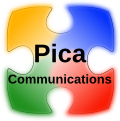
Discouraging Upgrades, Encouraging “Good Enough”
Software Assurance is a major booster of "good enough" which Microsoft considers its biggest competitor on the desktop
By Paul DeGroot
Principal Consultant
Pica Communications
Microsoft has often complained that its biggest competitor is “good enough.” Customers conclude that their current product is working just fine and there's no need to upgrade it.
SA encourages that attitude. Customers can win the SA bet by sticking with their current version as long as possible.
The reason is that mere loyalty to Microsoft products doesn't earn you any credit, literally. When it introduced SA, Microsoft canceled most other ways to upgrade, notably the right to get a discount on the next version of the product if you have a current version. Most other vendors of software aimed at general IT audiences give you credit for being a customer, as did Microsoft before it introduced SA, but Microsoft doesn't do that anymore.
Microsoft's approach may seem paradoxical: “If you want a discount later, you have to pay us more money now.”
Given that there's no discount if you don't have SA, and SA nearly doubles the price of the product, SA does not offer much financial incentive to upgrade.
In fact, given that SA is a bet, most customers are betting against Microsoft. The longer they wait to upgrade at full price, the better they can justify their decision to not buy SA.
At 29% a year on desktop products like Windows and Office, if you hold out for four years or more, the non-SA customer will pay “only” 100% for the upgrade license, while the SA customer will pay 116%. In effect, the SA customer is paying a 16% premium to get a 13% discount. And if Microsoft screws up and doesn't release an upgrade on time, you can end up paying for six years rather than three. That adds up to 174%, or a 74% premium to get a 13% discount.
Given typical corporate upgrade cycles, most companies will win the SA bet by skipping SA at least some of the time, and in some cases, as with Windows, they'll win the bet by skipping it most of the time. Furthermore, the longer they delay the upgrade—the longer the current product is “good enough”—the more money they save on the eventual upgrade.
(Windows is exceptional because customers almost always get a copy of the latest version of the product every time they buy a new PC. The rationale for purchasing upgrade rights for a new version of a product when you're going to pay for the new version anyway is dodgy. Nevertheless, a lot of customers do it. Microsoft's shareholders thank you.)
A caveat (since some people will bring up the exceptions). Sometimes Microsoft raises prices, sometimes a new version offers compelling new features and SA customers get a better deal. Most of the time that's not the case, particularly with common products like Windows and Office or with products that face significant competition. The problem here is that Microsoft doesn't announce the price of the next upgrade or what compelling features it will ship with until a few months before its release. So, yes, the benefits may be greater than projected here.
Still, that doesn't make SA a better bet, even if the price goes up and the feature set is better.
Here's an example. As I mentioned in “Making Upgrade Choices at the Worst Time,” a customer might have missed a nice bet on a Visio upgrade because Microsoft told them too late what features and editions Microsoft was putting into the new Visio 2010 Premium edition, which customers with SA on Visio 2007 Professional got it at no additional cost. However, early adopters who thought Visio 2007 Professional was good enough and didn't add SA to those licenses didn't actually lose anything, even though they didn't get a discounted upgrade on a more expensive product.
Here's why. Customers who bought Visio 2007 Professional near the time of its release in late 2006 and added SA to the Visio license in a three-year agreement paid about $400 for SA over the succeeding 3 years. However, Visio 2010 was released more than three years after Visio 2007 was released, so Visio 2007 early adopters would have had to renew SA for another three years and another $400 to get their discounted version of Visio Premium.
Comparing the early adopter who didn't buy SA on Visio Pro 2007 with the early adopter who did:
-
Non-SA: $800 for a full Visio 2010 Premium license in 2010
-
SA: $400 for each three-year SA subscription, which comes to $800 for two of them, plus any interest that they might have had to pay on the $800 over that time.
Who won that bet?
